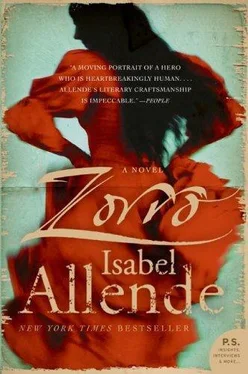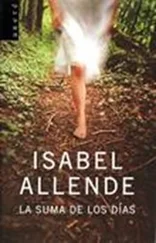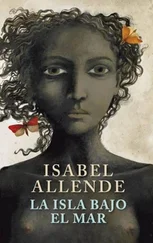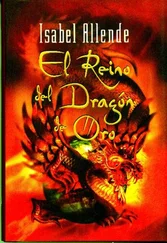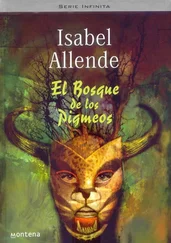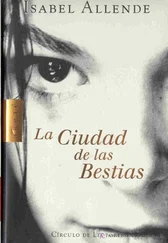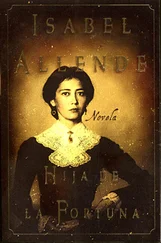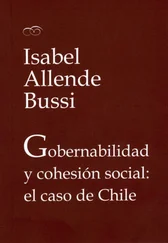Isabel Allende - Zorro
Здесь есть возможность читать онлайн «Isabel Allende - Zorro» весь текст электронной книги совершенно бесплатно (целиком полную версию без сокращений). В некоторых случаях можно слушать аудио, скачать через торрент в формате fb2 и присутствует краткое содержание. Год выпуска: 2005, ISBN: 2005, Издательство: Harper Perennial, Жанр: Исторические приключения, на английском языке. Описание произведения, (предисловие) а так же отзывы посетителей доступны на портале библиотеки ЛибКат.
- Название:Zorro
- Автор:
- Издательство:Harper Perennial
- Жанр:
- Год:2005
- ISBN:9780060779009
- Рейтинг книги:3 / 5. Голосов: 1
-
Избранное:Добавить в избранное
- Отзывы:
-
Ваша оценка:
- 60
- 1
- 2
- 3
- 4
- 5
Zorro: краткое содержание, описание и аннотация
Предлагаем к чтению аннотацию, описание, краткое содержание или предисловие (зависит от того, что написал сам автор книги «Zorro»). Если вы не нашли необходимую информацию о книге — напишите в комментариях, мы постараемся отыскать её.
Zorro — читать онлайн бесплатно полную книгу (весь текст) целиком
Ниже представлен текст книги, разбитый по страницам. Система сохранения места последней прочитанной страницы, позволяет с удобством читать онлайн бесплатно книгу «Zorro», без необходимости каждый раз заново искать на чём Вы остановились. Поставьте закладку, и сможете в любой момент перейти на страницу, на которой закончили чтение.
Интервал:
Закладка:
The two trunks were quite battered by the time they arrived; they had left Barcelona nearly a year before and had sailed on different ships across many seas before they reached Pueblo de los Angeles. One was filled with gorgeous dresses, high-heeled shoes, plumed hats, and fripperies that Regina rarely had occasion to wear. The other, intended for Alejandro de la Vega, contained a black silk-lined cape with silver buttons from Toledo, a few bottles of the best Spanish brandy, a set of dueling pistols with mother-of-pearl handles, an Italian fencing sword, and Maestro Manuel Escalante’s Treatise on Fencing and Dueling. Just as the first page explained, this was a compendium of the “most useful instructions to ensure that one never hesitates when it is necessary to defend one’s honor with Spanish sword or epee.” Eulalia de Califs could not have sent a more appropriate present. It had been years since Alejandro de la Vega had held a sword, but thanks to the manual he was able to refresh his knowledge and teach fencing to a son who still could not blow his own nose. He ordered a child-sized epee, a quilted vest, and a mask for Diego, and from that moment formed the habit of practicing with him a couple of hours every day. Diego demonstrated the same natural talent for fencing that he had for all athletic activities, but he did not take it seriously, as his father wanted him to; for him it was just another of the many games he shared with Bernardo. That unwavering complicity between the boys worried Alejandro de la Vega. To him it seemed a weakness in his son’s character, who was by now old enough to assume the role his destiny decreed. De la Vega was fond of Bernardo, and favored him among the Indian servants after all, he had seen him born but he could not forget the differences that existed between social levels. He maintained that without those differences, set out by God for a clear purpose, chaos would reign in this world. His favorite example was France, where everything had been turned topsy-turvy by that accursed revolution. In that country no one knew any longer who was who; power was passed from hand to hand like a coin. Alejandro prayed that something like that would never happen in Spain. Even though a succession of inept monarchs was leading the empire to inevitable ruin, Alejandro had never questioned the divine legitimacy of the monarchy, just as he never questioned the hierarchical order in which he had grown up or the absolute superiority of his race, his nation, and his faith. Diego and Bernardo were different by birth; they would never be equals, and it was his opinion that the sooner they understood that, the fewer problems they would have in the future.
Bernardo knew without having to have it drummed into his head, but it was a subject that drew tears from Diego when his father brought it up.
And far from seconding her husband in his didactic aims, Regina continued to treat Bernardo as if he were her son, too. In her tribe no person was superior to another because of birth, only for their courage or wisdom, and in her mind it was still very early to know which of the two boys was the more courageous or wise.
Diego and Bernardo parted only at bedtime, when each went to his mother’s room. The same dog bit them both, they were stung by bees from the same honeycomb, and they got the measles at the same time.
When one did something mischievous, no one bothered to identify the culprit; they made them both bend over to receive identical switchings, and they took their punishment without protest, as seemed perfectly fair. Everyone except Alejandro de la Vega thought of them as brothers, not only because they were inseparable, but because at first sight they looked very much alike. The sun had burned their skin to the same wood tone, Ana made them identical linen trousers, and Regina cut their hair in the Indian style. The observer had to look carefully to see that Bernardo had noble Indian features, while Diego was tall and fine-boned, with his mother’s caramel-colored eyes. In the years that followed, they learned to flourish the epee according to Maestro Escalante’s impeccable instructions, to gallop bareback on their horses, to use the whip and lasso, and to hang by their feet like bats from the eaves of the house. The Indians taught them to dive and rip shellfish from the rocks, to follow a prey for days to get a kill, to craft bows and arrows, and to endure pain and fatigue without complaining.
Alejandro de la Vega took them on the roundup when it was time to brand the cattle, each with his own riata so they could help in the task. It was the only manual labor considered proper for a gentleman, more sport than work. All the dons of the region brought their sons and vaqueros and Indians. They rounded up the cattle, separated them, and put their brands on them, which afterward were listed in a book to prevent confusion and cattle rustling. That was also the time for slaughtering, and after skinning the steers they rolled up the hides, salted down the meat, and rendered the fat. The nuqueadores, fabulous horsemen able to kill a steer by planting a dagger in its nape while riding at full tilt, were the kings of the roundup and tended to be signed up a year in advance. They came from Mexico and from the American prairies, with their trained horses and their long two-edged daggers. As soon as a steer was down, the peladores ran to them to skin them, stripping off the whole hide in a matter of minutes; then came the tasajeros, responsible for butchering the meat, and last the Indian women whose humble task it was to cut off the tallow, render it in enormous kettles, and then store it in botas made from bladders, intestines, or stitched skins. It was also the women’s responsibility to tan the hides, scraping the raw side with sharp knives, spending endless hours on their knees. The smell of blood maddened the herd, and there were always gutted horses and one or two vaqueros trampled or gored to death. The monster formed of thousands of head of cattle racing by, bawling and heaving, raising a hell of dust, was a sight to be seen; the vaqueros in their white sombreros, glued to their mounts, whistling lassos dancing over their heads and gleaming knives in their waistbands, were something to be admired; the thunder of the herd shaking the ground, the yells of the fired-up men, the whinnying horses and barking dogs, were sounds never to be forgotten; and the smells the steam rising from the hide of foam-flecked mounts, the acrid smell of the vaqueros, and the disturbing, warm, secret scent of the Indian women would linger forever in the men’s minds.
At the end of the roundup, everyone went into town to celebrate a task well done. Rich and poor, white and Indian, young and the few elderly in the colony, all joined in a spree that lasted several days. There was a wealth of food and drink; couples danced to music from Mexico till the last pair dropped; they bet on fistfights, rat fights, cockfights, dogfights, and bear-and-bull fights, and in one night they might lose everything they had earned during the roundup. On the third day, the fiesta ended with a mass officiated by Padre Mendoza, who used a coachman’s whip to herd the drunks off to the church, and then, musket in hand, forced the seducers of his young neophytes to marry them; he had counted, and nine months after every roundup a scandalous number of fatherless babies were born.
One year during a bad drought the ranchers had to kill off the wild horses to guarantee pasture for their cattle. Diego rode with the vaqueros, but for once Bernardo refused to go with him; he knew what they were going to do and he couldn’t bear to watch it. The riders encircled herds of horses, spooked them with gunpowder and dogs, chased them at full gallop toward the cliffs, and then drove them over in a blinding stampede. Horses jumped off by the hundreds, falling on top of one another, necks and legs broken by the fall into the bottom of the ravine. The fortunate died on the spot; others agonized for days amid a cloud of flies and a stench of carrion that attracted bears and buzzards.
Читать дальшеИнтервал:
Закладка:
Похожие книги на «Zorro»
Представляем Вашему вниманию похожие книги на «Zorro» списком для выбора. Мы отобрали схожую по названию и смыслу литературу в надежде предоставить читателям больше вариантов отыскать новые, интересные, ещё непрочитанные произведения.
Обсуждение, отзывы о книге «Zorro» и просто собственные мнения читателей. Оставьте ваши комментарии, напишите, что Вы думаете о произведении, его смысле или главных героях. Укажите что конкретно понравилось, а что нет, и почему Вы так считаете.
